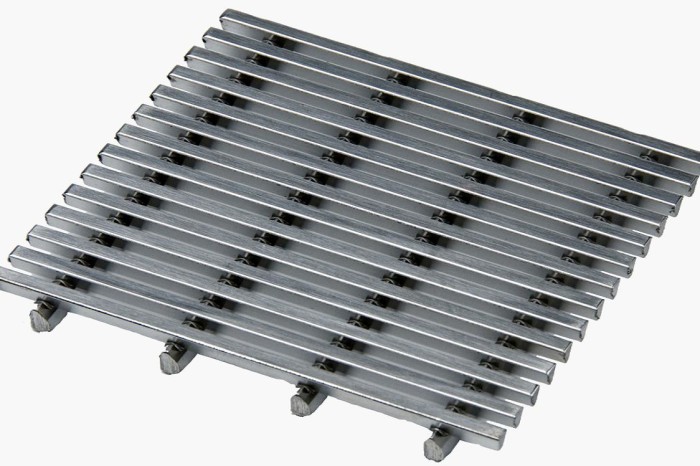This blog is the fourth in a series that has been dedicated to typical screening media that are installed in Vibratory Screeners with their advantages and disadvantages so you can be in a better position to assist us in the selection process.
Profile (Wire) Deck
This screening media is used primarily for dewatering applications. Additionally this decking is used in the Coal industry for drain & rinse and desliming applications. This decking is also utilized in screeners for the iron ore, potash and phosphate industries.
Profile decking is most often stainless steel construction, but can also be constructed from other metals. This decking most typically consists of V-shape or triangular wire profiles that are supported in parallel on cross bars. The wires are either welded or wrapped around the supports with the wide side on top so that it’s taper increasingly widens the opening between the wires to reduce the incidence of plug blinding. There is a wide variety of shapes available and this decking can be provided with straight wires or with the wires in a wavy pattern while remaining parallel to each other.
Its primary advantage is above average wear resistance and the openings which widen to reduce plug blinding. The disadvantages are reduced open area which is far less than wire cloth and its high cost. Although the high cost is not a major deterrent when the advantages due to it unique design are beneficial for your application.
Ah, spring time. Our Indians are off to a miserable start, but our Cavaliers are headed to the 2nd round of the playoffs. Can they make it to the Finals without Love? Stay tuned for my 5th and final installation on screening media for vibratory screeners and an update the Indians progress (hopefully) and just maybe the Cavs in the Finals.
Contact us today to see what our vibration specialists can do for you.

Jack Steinbuch has been with The Cleveland Vibrator Company for over 36 years accumulatively. He has previous experience in the manufacturing industry as a Senior Application Engineer and has worn many hats on our team in sales and managerial capacities. Now, he’s in the position of General Sales Manager. With a BSCE from The University of Toledo, he is an expert in the realm of sizing vibratory screeners and feeders, and sizing vibratory drives for tables and other vibratory equipment. Understanding that customer service is crucial, Jack believes it is important to provide the proper product for every application, even if it happens to not be supplied by The Cleveland Vibrator Company.
In his off-hours, you can find Jack spending time with his family and playing with his grandchildren. He loves sports; both watching and playing, and is an avid golfer and a league bowler during the winter. He will be retiring at the end of September 2021 and hopes to spend his winters vacationing in Florida.
Follow us:
Share this blog post:


